The results of Lighthouse Lab Services’ second annual wage and morale survey of Medical Laboratory Professionals show a slight improvement in the overall workplace satisfaction levels of the majority of respondents. However, despite these modest positive gains, most continue to report feeling the workforce strain placed on individuals within the profession despite receiving compensation increases over 2022 wages.
In summary, our results show an industry whose workers are reporting higher overall levels of morale following the end of the COVID-19 pandemic and associated Public Health Emergency. Despite this improvement, insufficient staffing levels and associated feelings of individuals being overworked continue to plague labs throughout the country, which will come of little surprise to those who have followed this long-gestating recruitment issue throughout the past decade-plus.
MORE: Download the full report as a PDF
Lighthouse’s intent with this project is to determine correlations between wages, morale, different positions, and experience levels as the Medical Laboratory industry continues to seek ways to better advocate for more training programs and new talent.
“We learned some good lessons last year when we first conducted this survey and hope to build on those takeaways to better illuminate and improve the status of the Medical Laboratory industry and professionals who support it,” said Jon Harol, President of Lighthouse Lab Services.
| Objectives: To inform the medical laboratory community of current levels of wages, staffing, and overall satisfaction among lab professionals, while also providing respondents with actionable data that can be used to inform future career choices. As this survey progresses in the coming years, we also aim to provide a better understanding of the current demographics and makeup of individuals comprising the overall workforce. |
| Methods: Lighthouse Lab Services solicited and collected responses from 1,062 lab professionals across our newsletters, social media, and other outreach channels. Respondents were given the option to submit their data anonymously. Wage data was submitted by 904 individuals and was primarily collected from respondents who identified as Lab Assistants, Technicians, Technologists, Managers, Administrative Support, Administrative Lab Directors, and CLIA Medical Lab Directors. The vast majority of our respondents reported they are female (74%), while a plurality (40%) indicated they have 21 or more years of experience as a lab professional. |
| Results: Results show a majority of respondents again received salary increases in 2023, although it should be noted most who received a compensation increase saw modest bumps of 1% to 5%. However, concerns over staffing levels and burnout remain significant. As with last year’s inaugural results, most individuals again indicated they feel their lab is understaffed and that they are being overworked relative to their position. Respondents continue to note the Medical Laboratory Profession as a whole requires efforts to increase public perception and awareness of the healthcare role they play. |
| Conclusion: As we noted last year, the medical laboratory industry must do more to increase the recruitment of new lab professionals as older individuals retire from the workforce. Part of this effort must include increasing the number of training programs and lab degrees offered nationwide after these programs have experienced attrition in recent years, which continues to limit the number of pathways for potential new hires. In addition to recruitment, labs must also focus on maintaining proper staffing levels to avoid employee burnout and maintain morale. Part of this effort must include a focus on compensation increases and consistent employee feedback in order to avoid turnover. |
Demographics and education
In total, Lighthouse collected data from 1,062 respondents. Of those, 62% described their race/ethnicity as White or Caucasian, while 14% identified as Black or African American, and 9% as Asian or Pacific Islander. An additional 6% identified as Latino or Hispanic, with Native Americans, multiracial individuals, and those identified as “not listed” comprising the remainder of the population.
This year, we also collected data on the gender of respondents after failing to do so as part of our 2022 survey. Individuals identifying as female comprised the overwhelming majority of our respondents at 74%. Meanwhile, men totaled 24% of responses, while those who identify as non-binary or preferred not to disclose their gender made up the remaining 2%. This falls in line with workforce statistics gathered by MLO in its 2023 survey of lab professionals (73% female), and career demographics tracker Zippia.com, which estimates the workforce is currently comprised of 66% females.
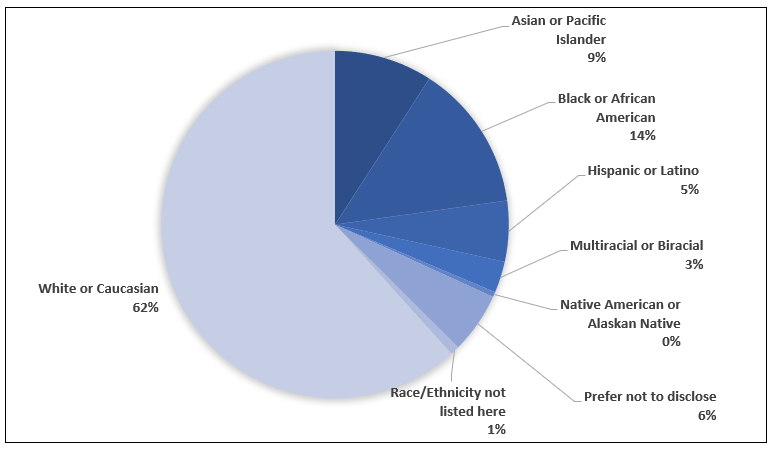
Respondents predominantly identified their roles as Technologists (49%), followed by Managers (20%), Technicians (15%), Administrative Lab Directors (7%), Lab Assistants/Accessioners (4%), Board Certified CLIA Lab Directors (3%), and Administrative Support/Other (2%). A plurality of individuals (40%) indicated they have 21 or more years of experience as a lab professional, while those with five or fewer years of experience comprised 20% of responses.
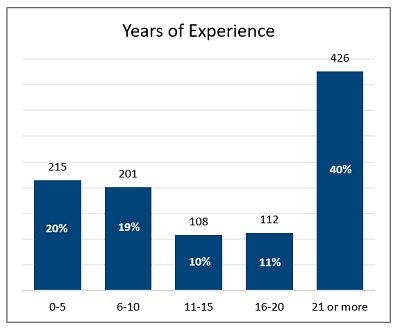 The vast majority of respondents (72%) said they work in a high-complexity lab, and 21% described their lab as moderate complexity. Additionally, 2% work in waived-complexity labs, while 5% were unsure of the complexity of their lab.
The vast majority of respondents (72%) said they work in a high-complexity lab, and 21% described their lab as moderate complexity. Additionally, 2% work in waived-complexity labs, while 5% were unsure of the complexity of their lab.
As for education, most of the individuals who completed the survey reported having earned a bachelor’s degree (56%) or master’s (22%). Those holding associate degrees totaled 13% of our responses, while 5% reported having earned a doctorate, and 3% with a high school diploma.
Staffing levels improving slightly, but continue to impact morale
One of the most significant takeaways from our 2022 report was the immense effect low staffing levels have on the morale of individual lab professionals. That impact continues to be felt this year.
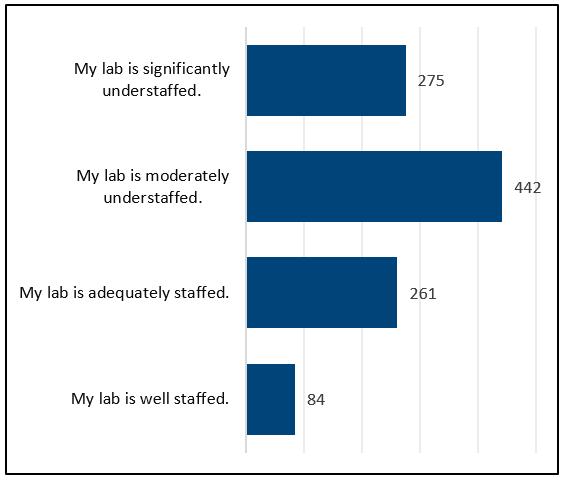 According to this year’s results, 41% of respondents indicated their lab is moderately understaffed, while another 26% described their lab as significantly understaffed. This represents a slight improvement from the 73% of respondents who reported feeling significantly or moderately understaffed in 2022. While this result may be impacted by lower sample volumes some labs are experiencing due to the end of the pandemic, we did not specifically inquire about changes to lab test volume impacting morale.
According to this year’s results, 41% of respondents indicated their lab is moderately understaffed, while another 26% described their lab as significantly understaffed. This represents a slight improvement from the 73% of respondents who reported feeling significantly or moderately understaffed in 2022. While this result may be impacted by lower sample volumes some labs are experiencing due to the end of the pandemic, we did not specifically inquire about changes to lab test volume impacting morale.
Just 31% of respondents felt their lab is adequately or well-staffed, up slightly from the 27% who reported satisfaction with their staffing levels last year. Unsurprisingly, the respondent’s perception of staffing levels had a direct correlation to their feelings of satisfaction, with those perceiving their lab’s staffing situation favorably more likely to express satisfaction with their role.
The following graph displays satisfaction levels among the 67% of respondents (717 total) who described their lab as moderately or significantly understaffed. Of this group, 41% described themselves as extremely or moderately unsatisfied in their role, while another 24% stated their morale was neutral. Just 35% of respondents who felt their labs had staffing issues said they were moderately or extremely satisfied with their careers, a slight increase from the 32% of lab professionals with staffing issues who reported satisfaction with their careers in 2022.
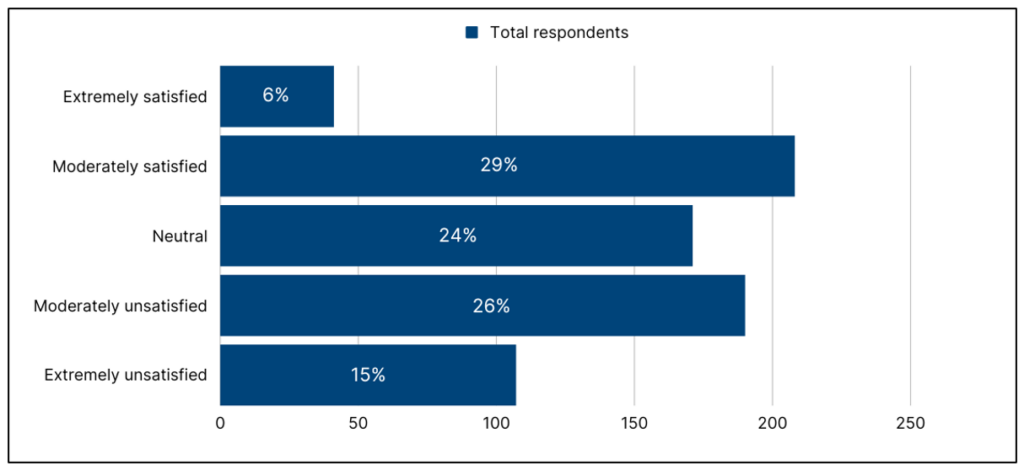
Finally, a majority of respondents (52%) described themselves “overworked” relative to their position, which makes sense in light of reported staffing shortages. The remainder described their workload as adequate (33%), while just 15% said they were satisfied with their current workload.
Several respondents noted low morale is in some cases caused by the shift during COVID that led many labs to persistently rely on temporary or travel employees, resulting in significant turnover and increased workloads for those who chose to stay in permanent positions.
“Often, labs are left understaffed, which forces those permanent staff members that are dedicated to the facility to pick up an abundance of extra hours,” one respondent commented. “This in turn leads to exhaustion that could have a negative impact on quality.”
Wage averages by position
The national average reported compensation across all positions was $81,840, collected from 904 respondents who chose to submit wage data. This falls almost exactly in line with our reported average of $81,188 collected from 1082 respondents across all positions in last year’s study.
The total pool of respondents for each position breaks down as follows: Technologists (443), Managers (182), Technicians (135), Administrative Lab Directors (67), Lab Assistant/Accessioner (33), CLIA Lab Director (28), and Administrative Support/Other (15). Last year, we elected to break California out as its own carveout due to traditionally higher averages of compensation within the state. However, we have opted not to do so this year after reviewing feedback from respondents who prefer data compiled to represent complete national averages.
The chart below depicts the 2023 national annual compensation by position compared against data collected in 2022. As noted above, most positions remained consistent with very slight changes from last year’s reported figures, with the exception of totals for CLIA Lab Directors. We primarily attribute this to our increased efforts to filter responses between CLIA and Administrative Lab Directors through additional screening questions.
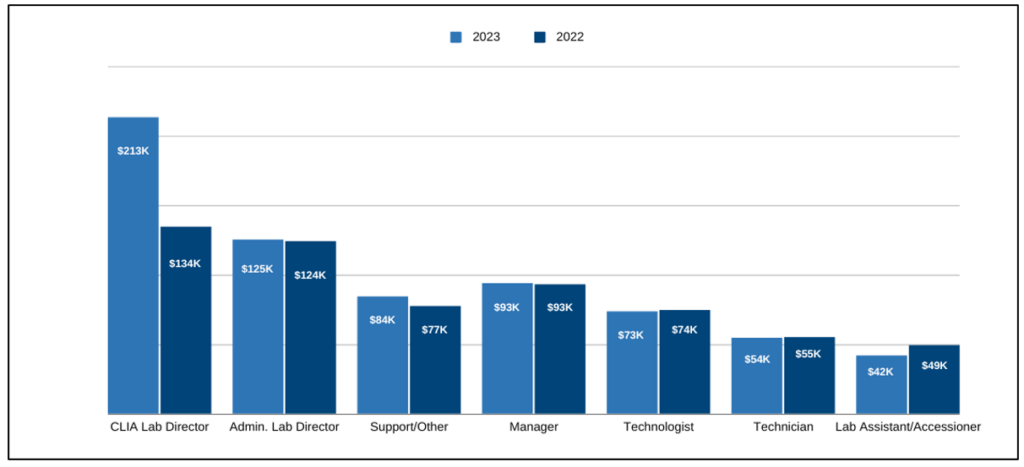
Recent raises and the gender wage gap
Overall, while the vast majority of respondents (74%) received a raise in the past year — up slightly from 72% who reported raises in 2022 — most compensation increases were modest, with 61% saying their pay bump ranged from a 1% to 5% increase over their previous salary. As expected, those who did not receive a pay raise in the past year were the most likely to indicate higher levels of dissatisfaction within their position.
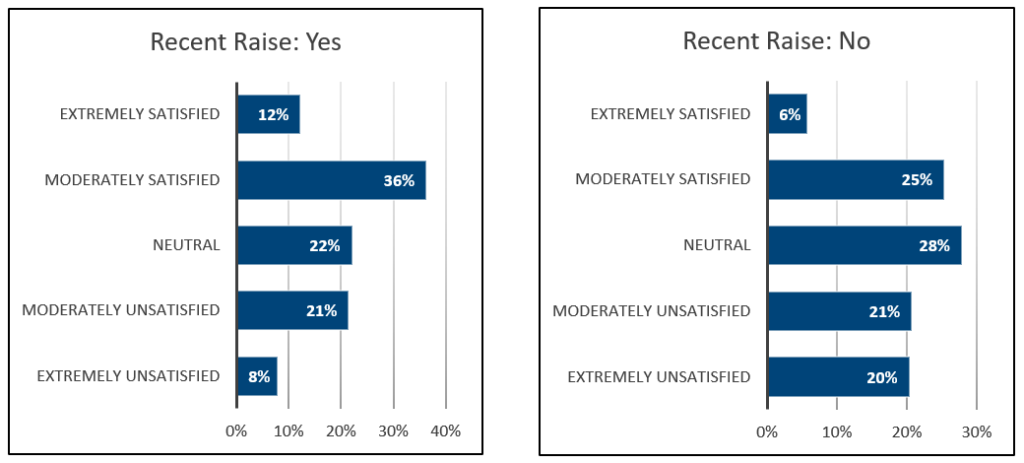
For the first time this year, our survey breaks down reported annual compensation averages by position for both males and females. On average, the 216 men who responded to the survey reported earning $93,418, a 19% increase compared to the average compensation of $76,047 reported by the 670 women who responded. The remainder of our respondents indicated they are either non-binary or chose not to report their gender.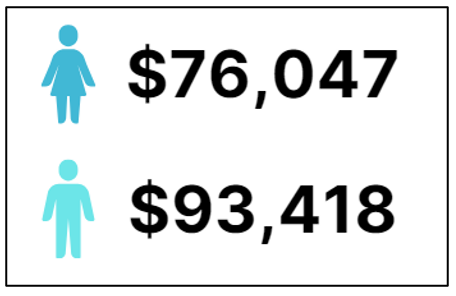
Some respondents noted they did not receive critical care pay increases during the COVID Public Health Emergency while nurses at their facility were awarded increased compensation. Others said their labs continue to lose employees to competitors who are offering better compensation, leading them to wonder why their employers don’t prioritize retention.
“We have had techs leave for higher-paying jobs for our competitors,” the individual noted. “The techs who remain then feel overworked and underpaid, further reducing morale within the company.”
The charts below break out a few additional details from our respondents:
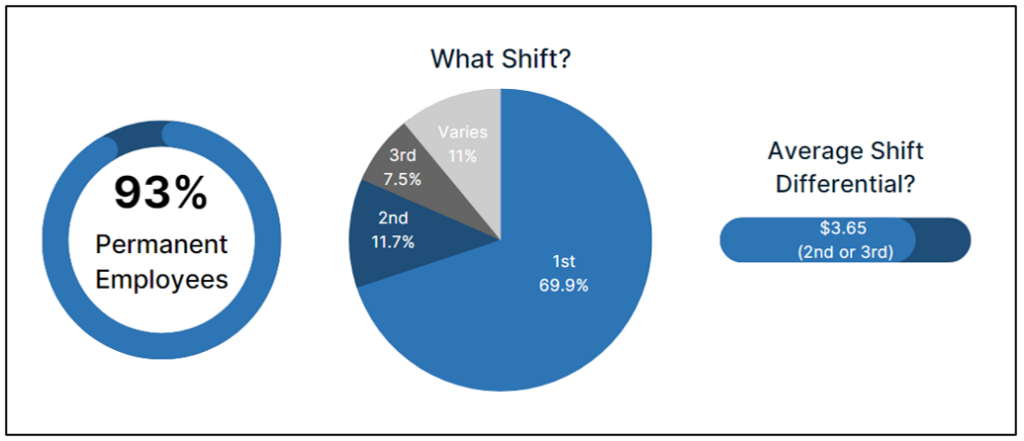
Examining CLIA-Certified Lab Directors
As part of this year’s survey, we took additional efforts to filter responses between CLIA-Certified Lab Directors and their administrative counterparts. This resulted in a more accurate representation of average annual compensation than our reported 2022 amount. In total, we received responses from 34 Lab Directors who indicated they are CLIA-certified, with 28 electing to submit salary data.
Here is a brief rundown of some of the other data we collected from this group:
- Average salary: $213K
- Average amount made from consulting in 2022: $49K
- 1099 or W-2, if employed by multiple labs?
- 1099 – 43%
- Both – 39%
- W-2 – 13%
- Unsure – 4%
One respondent noted they believe Lab Directors should be paid above a baseline wage due to the costs and time challenges of pursuing the degrees and certifications required to fill these positions.
“The minimum wage should be at least $100,000 as 90% of postdoctorals have families, and it’s challenging to support a family, even if it’s just one child and spouse,” the individual commented.
Morale remains lower among recent hires, but shows improvement
Overall, morale amongst the total pool of respondents increased slightly this year, with 44% saying they are moderately or extremely satisfied in their current role, up from 41% in 2022. Just 32% describe themselves as moderately or extremely unsatisfied, while 23% said they feel neutral about current morale levels.
Last year, we noted lab professionals with five or fewer years of experience were found to be less satisfied than their more experienced peers, with 41% describing being moderately or extremely unsatisfied and another 29% stating they were neutral. Those satisfaction figures improved slightly this year, as just 32% of newer entrants to the field reported some level of dissatisfaction within their role, and another 30% stated their feelings are neutral.
One respondent said they believe salaries for the industry will only be improved by lab professionals and stakeholders working to increase the visibility and public awareness of the profession.
“Right now, this is an underserved and thankless profession that demands notoriety and marketing efforts to improve staffing and wages in the long term,” the individual said.
Conversely, those with 21 or more years of experience were found to be the most satisfied with their roles, as nearly 48% described themselves as moderately or extremely satisfied, up from 45% satisfaction reported by this group in 2022. As expected, individuals who reported perceived staffing issues and feelings of being overworked expressed higher levels of dissatisfaction than their peers.
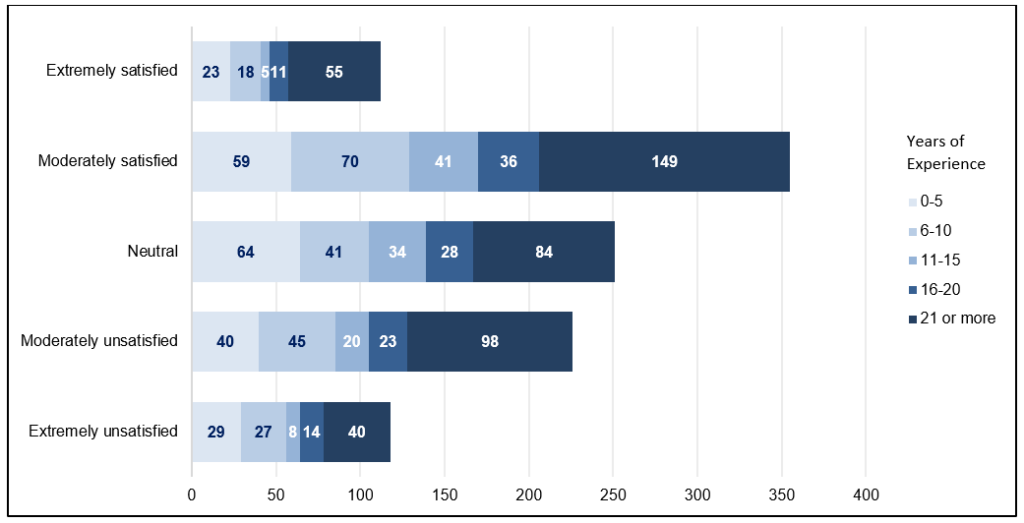
Conclusion
As noted in our introduction, while annual compensation increases have a direct positive impact on the morale of medical laboratory professionals, those increases continue to be modest and appear to have a minimal effect on retention. Beyond just compensation increases, labs can also improve their retention practices through efforts such as creating and discussing clear paths of growth for their employees, investing in uptraining for skilled employees, and regularly engaging them to hear new ideas and areas for improvement.
The industry must also do more to increase recruitment of new individuals to alleviate significant concerns surrounding staffing issues. In addition to recruitment efforts, medical laboratory advocates must also continue to push for an increase in the number of available lab degrees and training programs to increase the staffing pipeline after many of these programs have been shuttered or suffered attrition in recent decades.
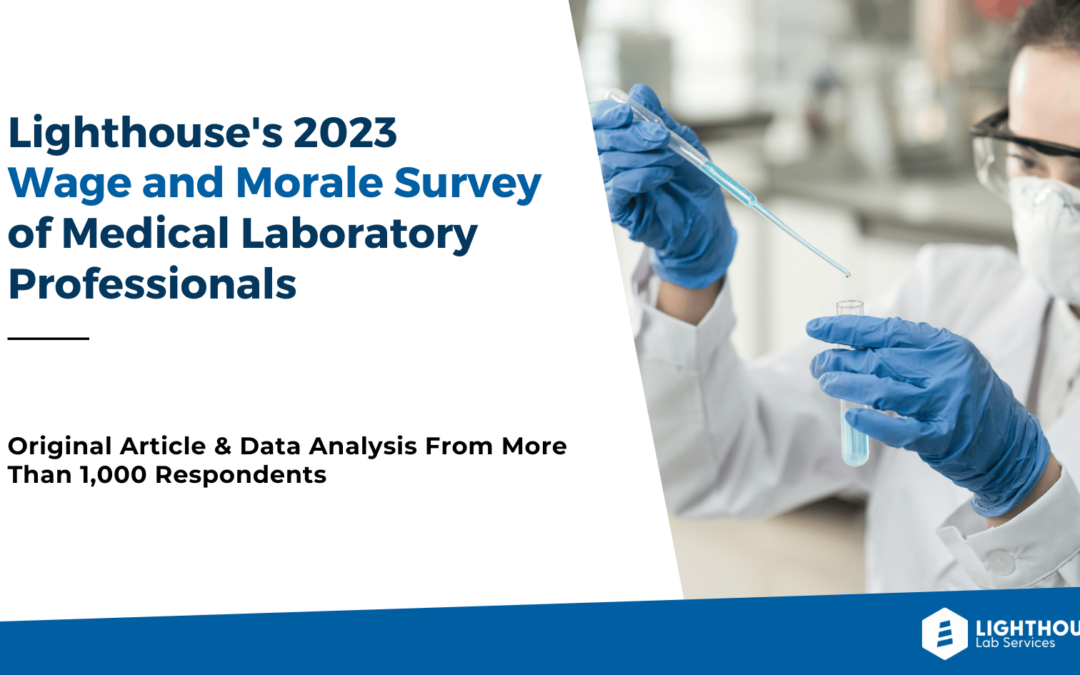
Thank you for sharing
NAACLS celebrities 50 yrs and report the number of accrddited prigrams have stabilized the past 2 decades. However – Solutions to Shortages must also include new accredited innovative educational curriculum programs and affiliations – particularly clinical laboratory internships.
And yes – visibility to ATTRACT & RECRUIT but then also compensation commensurate with education and experience to RETAIN.
AND – need medical laboratory professionals to join the professional societies and become Laboratory Advocates to help make a positive difference in a challenging Healthcare and Public Health environment
Support and mebtor new qualified board-certified and right to practice profession Medical Laboratory Scientists and Technicians
Seize the opportunities and become part of the Solutions
You’re welcome, Angela! Thank you for providing this supporting info – we couldn’t agree more with your points, especially the need for joining professional societies to boost their numbers and advocacy efforts.
The fact that there is shortage of qualified medical technologists across clinical laboratories in the United States is not in doubt. This is accentuated by the paucity of training opportunities and resources to support career progression both within and outside the clinical laboratory environment. It is therefore not surprising that the morale of staff is low. And this impacts negatively on the overall staff productivity. Although annual increase in wages are quite evident from available data, it is still altogether not reassuring enough to influence the choice of those still at the threshold of contemplating a career as a medical technologist at the entry level. A robust attempt to address this challenge must look in the direction of recruiting qualified laboratory professionals from outside the shores of United States. This will help to bridge the gap occasioned by the shortage of qualified medical technologists.
The staffing shortages are not just affecting our current working techs but also the students, and new hires going into the profession. Most programs send their students to a clinical lab to learn hands on experience of the profession but there aren’t enough techs to spare time from actual patient work to teach new students or train new staff. The number of weeks allowed to each dept gets shorter all the time, and new techs feel rushed into their positions and unprepared for the work. They are dissatisfied right from the beginning. Administrations need to take a proactive stand on this and start putting measured into place for training or the lack of techs will just keep growing larger.
That’s a great point and something that could account for why we’re seeing techs who are newest to the field report the lowest levels of satisfaction. Having your first initial experience be rushed has a definite impact and likely leaves these students uncertain about their future prospects.